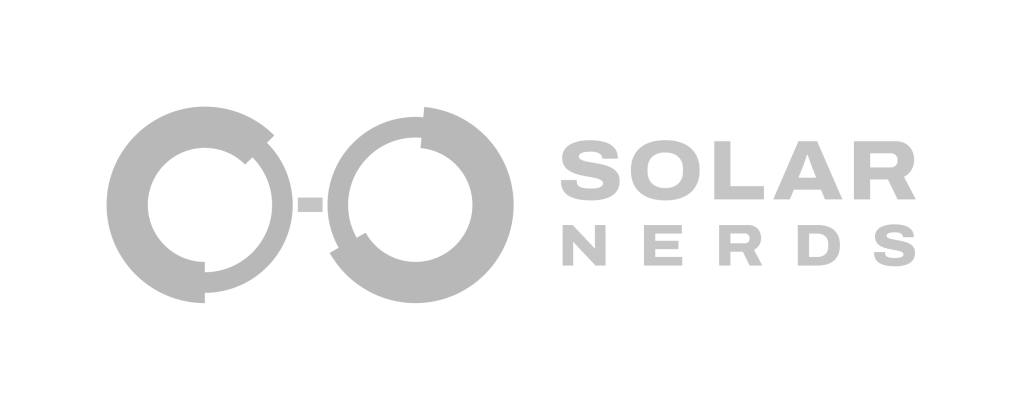Table of Contents
What Are Feed-in Tariffs?
Looking for State-Specific Information?
To access the most recent updates on feed-in tariffs, regulations, and retailer pricing in your area, please visit our state-specific pages:
- New South Wales
- Victoria
- Queensland
- South Australia
- Western Australia
- Tasmania
- Northern Territory
- Australian Capital Territory
A Feed-in Tariff (FiT) is a payment made to solar energy system owners for the electricity they feed back into the grid. When your solar panels produce more electricity than your home consumes, the excess energy is exported to the electricity network, and your energy retailer compensates you for this surplus production.
Purpose and Function of FiTs
FiTs serve as an incentive to encourage the adoption of renewable energy sources like solar power. By providing financial returns for excess energy generated, FiTs make investing in solar panels more attractive to consumers. This not only benefits individual households through energy savings but also contributes to the broader integration of renewable energy into the national grid.
How Feed-in Tariffs Work
Mechanism of Energy Export
When a solar photovoltaic (PV) system generates electricity, it first supplies power to the home or business where it’s installed. If the system produces more electricity than the property consumes at that moment, the surplus energy is automatically exported to the electricity grid. This process requires no manual intervention the solar inverter and metering system manage it seamlessly.
Interaction Between Solar PV Systems and the Electricity Network
The exported electricity is fed into the local electricity network, contributing to the overall energy supply used by other consumers. Your energy retailer tracks the amount of energy you export using a bi-directional meter, which records both the electricity drawn from the grid and the electricity sent back.
Measurement and Compensation
Metering Systems Used to Measure Exported Energy
Modern smart meters or bi-directional meters are essential for measuring both the import and export of electricity. These meters provide accurate readings of energy consumed from the grid and energy exported to it, ensuring that you are fairly compensated for your contributions.
How Consumers Are Compensated by Retailers
Compensation for exported energy appears as a credit on your electricity bill, calculated by multiplying the amount of electricity exported (measured in kilowatt-hours, kWh) by the FiT rate offered by your retailer. For example, if you export 100 kWh in a billing period and your FiT rate is 6 cents per kWh, you would receive a $6 credit on your bill.
Types of Feed-in Tariffs
Net Feed-in Tariffs
Definition and How They Operate
A Net Feed-in Tariff compensates you only for the surplus electricity you export to the grid after meeting your own energy needs. Under this scheme, your solar generation first offsets your consumption, reducing the amount of electricity you need to purchase from the grid, and only the excess is eligible for FiT credits.
Common Applications in Current FiT Schemes
Net FiTs are the most common type of FiT scheme in Australia today. They encourage solar system owners to maximize their self-consumption of solar energy, as savings from reduced grid consumption often outweigh earnings from exporting electricity.
Gross Feed-in Tariffs
Explanation and Differences from Net FiTs
A Gross Feed-in Tariff pays you for all the electricity your solar system generates, regardless of your personal consumption. Under this scheme, all solar-generated electricity is exported to the grid, and you purchase all your electricity needs from your retailer.
Historical Context and Current Usage
Gross FiTs were more common in the early days of solar adoption in Australia, often featuring higher rates to stimulate investment in solar technology. These schemes have largely been phased out and replaced by net FiTs due to changes in government policies and the declining cost of solar installations.
Two-Part FiTs
Structure of FiTs with Thresholds
Two-Part Feed-in Tariffs offer a higher FiT rate up to a certain daily export threshold, after which a lower rate applies. For example, a retailer might offer 16 cents per kWh for the first 5 kWh exported each day and then reduce the rate to 5 cents per kWh for any additional exports.
Impact on Earnings and Examples
This structure incentivises moderate energy exports and can benefit customers who export smaller amounts of electricity. However, for those with larger systems or higher export volumes, the average FiT rate received may be lower due to the reduced rate after the threshold.
Time-of-Day FiTs
Variable FiT Rates Based on Export Times
Time-of-Day Feed-in Tariffs offer varying FiT rates depending on when the electricity is exported. Higher rates are typically provided during peak demand periods when electricity is more valuable to the grid, and lower rates during off-peak times.
Peak vs. Off-Peak Rates and Their Implications
By aligning higher FiT rates with peak demand times, these schemes encourage solar owners to export energy when it is most needed. However, since solar production peaks during midday when demand may not be at its highest, benefiting from higher peak rates can be challenging without energy storage solutions.
Calculating Potential Earnings from FiTs
Estimating Solar Energy Production
Factors Influencing Solar Output
Several factors affect how much electricity your solar system can produce:
- Location: Areas with higher solar irradiance will generate more electricity.
- System Size: Larger systems with more panels produce more energy.
- Panel Efficiency: Higher efficiency panels convert more sunlight into electricity.
- Orientation and Tilt: The angle and direction of your panels impact exposure to sunlight.
- Shading: Obstructions like trees or buildings can reduce output.
Tools and Resources for Estimation
Online calculators and tools, such as those provided by government energy departments or organisations like SunSPOT, can help estimate your system’s potential production based on your specific circumstances.
Analyzing Energy Consumption and Export Ratios
Balancing Self-Consumption and Energy Export
Maximising self-consumption using the solar energy you generate in your home often provides greater financial benefits than exporting surplus energy for FiT credits. This is because the cost of electricity from the grid is generally higher than the FiT rate offered for exports.
How Consumption Habits Affect FiT Earnings
Your daily routines and energy usage patterns influence how much excess energy you have to export. Homes with higher daytime energy use may have less surplus to export, reducing FiT earnings but increasing savings from self-consumption.
Example Calculations
Step-by-Step Guide to Calculating Potential FiT Earnings
- Estimate Daily Solar Production: Determine your system’s average daily production in kWh.
- Calculate Self-Consumption: Assess how much of that energy you will use directly.
- Determine Excess Energy: Subtract self-consumption from total production to find surplus kWh.
- Apply FiT Rate: Multiply the surplus kWh by your retailer’s FiT rate to estimate earnings.
Scenarios with Different Consumption and Export Levels
- High Self-Consumption Scenario: A household uses most of its solar energy, resulting in minimal exports and lower FiT earnings but significant savings on energy bills.
- High Export Scenario: A household with low daytime energy use exports more surplus energy, leading to higher FiT earnings but less savings from self-consumption.
Factors Influencing FiT Rates
Market Dynamics
Impact of Supply and Demand on FiT Rates
As more solar energy is fed into the grid, especially during peak production times, the value of that energy can decrease due to oversupply. This abundance can lead to lower wholesale electricity prices during those periods, affecting the FiT rates retailers are willing to offer.
Influence of Wholesale Electricity Prices and Renewable Energy Penetration
Fluctuations in wholesale electricity prices, influenced by factors like fuel costs and renewable energy contributions, directly impact FiT rates. When wholesale prices drop, retailers may reduce FiT rates accordingly.
Energy Retailer Policies
Retailers' Discretion in Setting FiT Rates
In many regions, retailers have the freedom to set their own FiT rates, which can vary significantly between companies. Some retailers may offer higher FiTs as a competitive strategy to attract solar customers, while others may focus on lower usage rates or supply charges.
Variations in FiT Offerings and Terms Between Retailers
Differences may include:
- Rate Structures: Single-rate, time-of-day, or two-part FiTs.
- Eligibility Criteria: Requirements regarding system size or customer location.
- Additional Conditions: Bundling with specific plans or products.
Regulatory Framework
Overview of Regulations Affecting FiTs
Government bodies may provide guidelines or set minimum FiT rates to protect consumers and promote renewable energy. These regulations can vary by state or territory and are subject to change based on policy updates.
Links to State-Specific Regulations and Policies
For the most current information, consumers should refer to official resources or government websites specific to their region.
Feed-in Tariffs and Return on Investment
Financial Impact of FiTs
Role of FiTs in Reducing Solar System Payback Periods
FiT earnings contribute to offsetting the initial investment in a solar system by providing a revenue stream for exported energy. While self-consumption offers immediate savings by reducing electricity bills, FiTs add to the overall financial return, potentially shortening the payback period.
Importance of Considering FiTs in Financial Planning
When evaluating the economics of installing solar panels, it’s important to factor in both the savings from self-consumption and the additional income from FiTs. This comprehensive approach provides a clearer picture of the system’s return on investment (ROI).
ROI Calculation Methods
Incorporating FiT Earnings into ROI Analyses
To calculate ROI:
- Total Savings: Combine annual savings from reduced grid consumption with FiT earnings.
- Initial Investment: Account for the cost of the solar system and installation.
- Payback Period: Divide the initial investment by the annual total savings to estimate how long it will take to recoup the costs.
Accounting for Potential Changes in FiT Rates Over Time
FiT rates are subject to change due to market conditions and policy shifts. It’s prudent to use conservative estimates for future FiT earnings and consider scenarios where rates may decrease when planning your investment.
Common Myths and Misconceptions about Feed-in Tariffs
Myth 1: Higher FiTs Always Mean Higher Savings
While a higher FiT rate can increase earnings from exported energy, plans offering high FiTs may have higher usage rates or supply charges, offsetting potential savings. It’s essential to consider the overall cost structure of the electricity plan.
Evaluating both the FiT rate and the associated costs ensures you select a plan that offers true financial benefits based on your consumption and export patterns.
Myth 2: FiT Rates are Guaranteed and Will Not Change
FiT rates are influenced by market conditions, wholesale electricity prices, and regulatory decisions. Retailers may adjust their FiT offerings in response to these factors.
When planning your solar investment, consider conservative FiT estimates and stay informed about potential policy changes that could affect future rates.
Myth 3: Solar Panels are Not Worth It Without High FiTs
The primary financial benefit of solar panels comes from reducing your electricity bills through self-consumption. Even with lower FiT rates, the savings from using your own generated energy remain significant.
Investing in solar panels contributes to environmental sustainability and can increase property value, providing non-financial benefits as well.
Myth 4: Bigger Solar Systems Always Lead to Better FiT Returns
Larger systems produce more energy, but if the excess cannot be effectively used or exported (due to export limits or low FiT rates), the additional investment may not yield proportional returns.
Selecting a system that matches your energy consumption patterns maximizes both self-consumption savings and FiT earnings, ensuring a better ROI.
Frequently Asked Questions
Eligibility and Requirements for Receiving FiTs
Basic Criteria for Participating in FiT Programs
- Grid Connection: Your solar system must be connected to the electricity grid.
- Compliance Standards: The system should meet technical standards and safety requirements.
- Appropriate Metering: Installation of a compatible bi-directional or smart meter.
Necessary Equipment and Compliance Standards
Ensure your solar installer is accredited and that the equipment used complies with national standards to qualify for FiTs.
How FiTs Appear on Electricity Bills
Explanation of Billing Statements
FiT credits typically appear as a separate line item on your electricity bill, showing the total kWh exported and the corresponding credit amount.
Understanding Credits and Charges Related to FiTs
Your bill will reflect both the charges for electricity consumed from the grid and the credits for electricity exported, resulting in a net amount payable or credit carried forward.
What Happens When FiT Rates Change
Impact on Existing and New Customers
Changes in FiT rates may affect new customers or, depending on the terms of your agreement, could impact existing customers. Some plans may lock in FiT rates for a period, while others may adjust rates in line with market changes.
Options for Consumers When Rates Are Adjusted
If FiT rates decrease, you can:
- Review Your Plan: Consider switching to a plan or retailer offering better overall value.
- Increase Self-Consumption: Implement strategies to use more of your generated energy.
- Explore Storage Solutions: Invest in batteries to store excess energy.
Conclusion
Summary
Understanding solar feed-in tariffs is crucial for maximizing the benefits of your solar investment. FiTs provide financial returns for surplus energy exported to the grid, but their rates and structures can vary widely. By comprehending how FiTs work, the types available, and the factors influencing them, you can make informed decisions that enhance your savings and support renewable energy integration.
Additional Resources
For the most current and detailed information on feed-in tariffs and related policies in your area, please refer to:
- Energy Made Easy: https://www.energymadeeasy.gov.au
- State Government Energy Departments: Access state-specific regulations and updates.
- Accredited Solar Installers: Consult professionals for personalized advice.
Remember: Feed-in tariffs are just one aspect of the overall financial equation when considering solar energy. Maximizing self-consumption, selecting the right system size, and choosing an appropriate energy plan are all critical steps toward achieving the best return on your solar investment.




